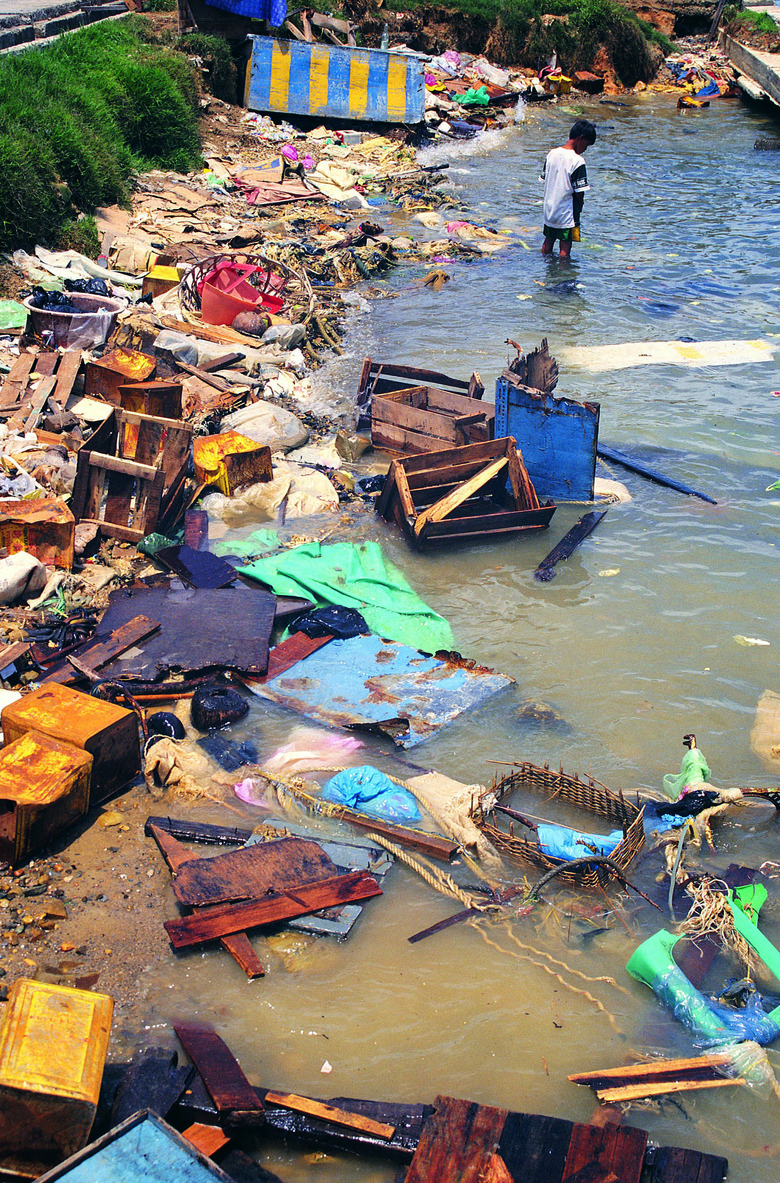Environmental Problems Caused By Synthetic Polymers
Synthetic polymers can come in a variety of forms, such as common plastics, the nylon of a jacket, or the surface of a non-stick frying pan, but these human-made materials have a detrimental impact on ecosystems which U.S. National Institute of Health researchers have called "a rapidly increasing, long-term threat." Understanding the ways that synthetic polymers degrade ecosystems is important in taking steps to eliminate this form of pollution.
Food Imitation
Food Imitation
One of the most common environmental problems associated with synthetic polymers pollution is that 44 percent of seabird species are known to have ingested synthetic polymers that have been mistaken for food, according to the U.S. National Institutes of Health — with millions dying from this ingestion every year. This broad reaching death of shore birds presents a significant environmental problem because shorebirds play a vital ecological role in maintaining the population sizes of fish and crustaceans.
POPs Secretion
POPs Secretion
POPs, or persistent organic pollutants, are known toxins that remain in the environment for many years, such as the pesticides DDT and toxaphene. A 2007 study by researchers at the University of the Pacific sampled synthetic polymers found at coastal sites in the northern Pacific ocean, and found the presence of harmful toxins in every sample of synthetic polymers. These synthetic polymers can continuously secrete harmful chemicals into fish and wildlife when ingested and threatens the health of ocean fisheries that humans eat from.
Production Pollution
Production Pollution
Beyond its evident pollution of oceans, synthetic polymers can also present environmental problems in the process of their production. The Environmental Working Group organization shows that the DuPont chemical company leaked contaminates used in their production of Teflon into local watersheds for several decades. According to the U.S. Environmental Protection Agency, this chemical accumulates in the gills of fish and can travel in high quantities up the food chain.
Landfill Accumulation
Landfill Accumulation
Even beyond their persistence in oceans and water pollution from their production, synthetic polymers are a significant challenge on land because they are often disposed of in landfills where they will remain for centuries into the future slowly leaking toxins into soil as time passes. According to the Clean Air Council organization, Americans alone use an estimated 102.1 billion plastic bags — a synthetic polymer — each year, and less than 1 percent of these bags are recycled. Not only do these synthetic polymers slowly leach harmful chemicals in the soil, their longevity and non-biodegradability means new landfills will be a constant need as synthetic polymer use continues and grows.
References
- Persistent Organic Pollutants Carried by Synthetic Polymers in the Ocean Environment
- U.S. National Institutes of Health: Synthetic Polymers in the Marine Environment: A Rapidly Increasing Long-Term Threat
- Environmental Working Group: DuPont Hid Teflon Pollution for Decades
- U.S. Environmental Protection Agency: Emerging Contaminates PFOS and PFOA
- Clean Air Council: Waste and Recycling Facts
Cite This Article
MLA
King, Justin. "Environmental Problems Caused By Synthetic Polymers" sciencing.com, https://www.sciencing.com/environmental-problems-caused-by-synthetic-polymers-12732046/. 5 March 2014.
APA
King, Justin. (2014, March 5). Environmental Problems Caused By Synthetic Polymers. sciencing.com. Retrieved from https://www.sciencing.com/environmental-problems-caused-by-synthetic-polymers-12732046/
Chicago
King, Justin. Environmental Problems Caused By Synthetic Polymers last modified August 30, 2022. https://www.sciencing.com/environmental-problems-caused-by-synthetic-polymers-12732046/
